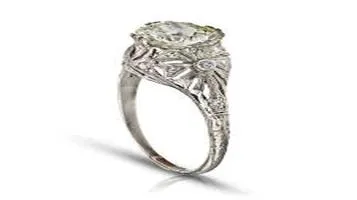The Timeless Appeal of Beanies: A Comprehensive Review
Beanies are snug-fitting, soft headwear that provides warmth and style, making them a popular accessory for all ages. Typically crafted from materials like wool, cotton, or synthetic fibers, beanies are designed to cover the head and ears, offering protection against cold weather. Their versatile nature allows them to complement various fashion styles, from casual to sporty and even chic. Beanies come in an array of colors, patterns, and designs, often featuring embellishments such as pom-poms, embroidery, or logos. Beyond their functional purpose, they serve as a fashion statement, allowing individuals to express their personal style. Easy to wear and pack, beanies are a must-have accessory for outdoor activities, urban adventures, or simply adding a cozy touch to any outfit.

Beanies, those snug-fitting, brimless caps, have long transcended their humble origins to become a staple in wardrobes worldwide. From the frosty slopes of Aspen to the bustling streets of Tokyo, beanies are ubiquitous. This review delves into the various facets that make beanies a beloved accessory for people of all ages and styles.
Historical Context and Evolution
Beanies have an intriguing history that dates back centuries. Initially, they were practical items worn by laborers and sailors to keep warm in harsh weather conditions. The term "beanie" is believed to come from the early 20th century, derived from the slang word "bean," meaning head. Over time, beanies transitioned from being purely functional to a fashion statement, thanks in part to pop culture and influential personalities who adopted them.
Material and Craftsmanship
Modern beanies come in a plethora of materials, each offering distinct advantages. Wool, particularly Merino wool, is a popular choice due to its excellent insulation and moisture-wicking properties. Cashmere beanies provide a touch of luxury with their unparalleled softness and warmth. On the other end of the spectrum, synthetic fibers like acrylic and polyester offer affordability and durability, making them accessible to a broader audience.
The craftsmanship of a beanie can significantly impact its quality and longevity. Hand-knitted beanies often boast superior attention to detail and unique patterns, while machine-knitted ones ensure consistency and affordability. High-quality beanies typically feature a seamless construction, ensuring they fit well and retain their shape over time.
Design and Versatility
One of the most endearing qualities of beanies is their versatility. They come in various styles, including the classic cuffed beanie, the slouchy beanie, and the pom-pom beanie, each catering to different tastes and occasions. Colors range from understated neutrals to vibrant hues, allowing individuals to express their personality and complement their attire.
The design of a beanie can also influence its functionality. For example, beanies with a fleece lining offer added warmth, making them ideal for winter sports or extremely cold climates. Lightweight beanies, on the other hand, are perfect for transitional seasons like autumn and spring when temperatures can be unpredictable.
Comfort and Fit
Comfort is paramount when it comes to headwear, and beanies excel in this area. The stretchy nature of knit fabrics ensures a snug yet comfortable fit for various head sizes. It's crucial, however, to choose the correct size and style to avoid discomfort. A beanie that's too tight can cause headaches, while one that's too loose may not provide adequate warmth.
The breathability of the material also plays a significant role in comfort. Natural fibers like wool and cotton offer excellent breathability, preventing overheating and ensuring the wearer stays comfortable even during prolonged use.
Cultural Significance and Popularity
Beanies have carved a niche in various subcultures, from skaters and snowboarders to hip-hop artists and tech entrepreneurs. This widespread appeal is a testament to the beanie's adaptability and style. In the 1990s, beanies became synonymous with the grunge movement, thanks to bands like Nirvana. More recently, tech moguls like Mark Zuckerberg have popularized the minimalist, understated beanie look.
Celebrities and influencers continue to play a significant role in the popularity of beanies, often spotted wearing them in casual settings or even on the red carpet. This cultural endorsement has cemented the beanie's status as a fashion-forward yet accessible accessory.
Environmental Impact
As with any fashion item, the environmental impact of beanies cannot be overlooked. The fashion industry is one of the largest polluters globally, and sustainable practices are becoming increasingly important to consumers. Sustainable beanies made from organic or recycled materials are gaining traction, offering eco-conscious individuals a way to stay stylish while minimizing their environmental footprint.
Brands like Patagonia and The North Face are leading the charge in this regard, offering beanies made from recycled polyester or responsibly sourced wool. These options not only reduce waste but also often come with certifications that ensure fair labor practices.
Conclusion
In conclusion, beanies are more than just a practical item for keeping warm; they are a versatile, stylish, and culturally significant accessory. Their evolution from functional headgear to a fashion staple is a fascinating journey, reflecting broader trends in society and fashion. Whether you prefer the luxurious feel of cashmere, the practicality of wool, or the affordability of synthetic fibers, there's a beanie out there for everyone. With their timeless appeal and ever-evolving designs, beanies are sure to remain a beloved accessory for years to come.






